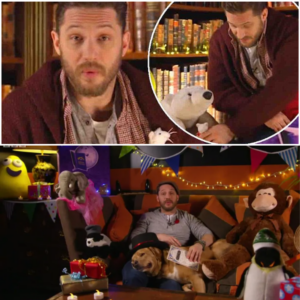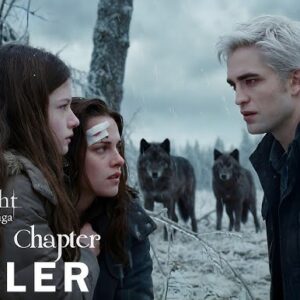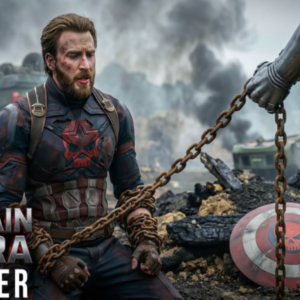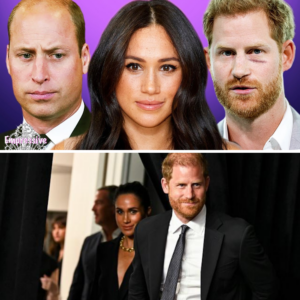In the dim, echoing confines of the Pont de l’Alma underpass, where the River Seine’s murmur is muffled by concrete and steel, a moment of profound humanity unfolded amid unimaginable chaos. It was just after midnight on August 31, 1997, and the glittering streets of Paris had given way to tragedy. A black Mercedes S280, hurtling at over 60 miles per hour, slammed into a pillar, crumpling like tin foil in a collision that would reverberate through history. Inside were four souls: driver Henri Paul, fashion mogul Dodi Fayed, bodyguard Trevor Rees-Jones, and the woman the world knew as the People’s Princess—Diana, Princess of Wales. As sirens wailed and flashbulbs pierced the night, one man emerged from the shadows of that wreckage with a story etched into his soul: Xavier Gourmelon, a 28-year-old firefighter from the Paris brigade, who knelt beside Diana, held her hand, and heard her last words. “My God, what’s happened?” she whispered in English, her voice a fragile thread in the darkness. Those four words, spoken in confusion and fear, have lingered for nearly three decades, a poignant epitaph to a life cut short at 36, and a testament to the quiet heroism of those who tried to pull her back from the brink.
The night had begun as a fairy tale laced with tension, the kind that tabloids devoured and romantics idealized. Diana, newly divorced from Prince Charles and embracing a life unbound by Buckingham Palace’s rigid protocols, had jetted to Paris with Dodi Fayed, son of billionaire Mohamed Al-Fayed. Their romance, blossoming over Mediterranean yacht cruises and Sardinian sunsets, symbolized Diana’s defiant pursuit of joy after years of royal scrutiny. The couple, along with Rees-Jones, dined at the Ritz Hotel—Mohamed’s opulent jewel in the Place Vendôme—sipping chilled rosé and plotting an escape from the paparazzi swarm outside. Photographers, a relentless shadow since her wedding day in 1981, had hounded her every step, their flashes a constant reminder of the price of fame. To evade them, the group slipped out a rear entrance into the Mercedes, with Paul—a deputy manager at the Ritz—at the wheel. What should have been a 10-minute drive to Dodi’s apartment became a fatal sprint through the city’s arteries, ending in the tunnel’s unforgiving embrace.
The crash was cataclysmic. Witnesses described a blur of motion: the Mercedes weaving erratically, clipping a white Fiat Uno (whose driver remains unidentified to this day), then veering into the 13th pillar at breakneck speed. The impact sheared off the car’s roof, ejecting Dodi and Paul instantly; Rees-Jones, belted in the front, clung to life amid shattered glass. Diana, in the rear passenger seat without a seatbelt—a rare lapse for the safety-conscious mother—survived the initial jolt, her body twisted but intact on the floor. Blood trickled from a shoulder wound, but her blue eyes fluttered open amid the acrid smoke and twisted metal. The tunnel, a dimly lit artery under the Champs-Élysées, trapped the screams and sirens, turning the scene into a surreal tableau of urgency.
Gourmelon and his 10-man team from the Pompiers de Paris Fire Brigade were the first responders, arriving in under three minutes—a testament to the city’s efficient emergency grid. Dispatched at 12:26 a.m. for a “violent collision,” they barreled into the tunnel expecting a routine pile-up. Instead, they found pandemonium: mangled wreckage, dazed bystanders, and a swarm of photographers jockeying for position, their cameras clicking like vultures. “The car was in a mess,” Gourmelon later recalled, his voice steady but laced with the weight of memory. “We treated it like any road accident—straight to work, assessing who needed help.” Paul was slumped over the wheel, lifeless; Dodi lay motionless in the back. Rees-Jones, his face a mask of blood and bone from severe fractures, moaned incoherently, repeatedly asking, “Where is she? Where is the Princess?” Gourmelon ignored the question, focusing on stabilization—securing his neck brace and urging calm.
It was Diana who drew Gourmelon’s gaze next. Slumped on the floor behind the front seats, she appeared deceptively serene—no visible broken bones, just a gash on her right shoulder and faint bruising. “She was moving very slightly,” he said. “I could see she was alive.” Kneeling in the debris, Gourmelon reached through the wreckage, his gloved hand finding hers. In that instant, identity faded; she was just a woman in distress, her evening gown torn but elegant. “I tried to calm her,” he explained. Speaking broken English honed from training drills, he reassured her as best he could. Then, her lips parted: “My God, what’s happened?” The words hung in the air, a mix of bewilderment and plea, her voice soft but clear amid the chaos. Gourmelon squeezed her hand, a silent vow of aid, as colleagues administered oxygen and prepared for extraction.
What followed was a blur of medical frenzy. Diana’s pulse weakened; moments after her query, she slipped into cardiac arrest, her chest stilling under Gourmelon’s palm. “I massaged her heart,” he recounted, demonstrating the rhythmic compressions years later in interviews. “A few seconds later, she started breathing again.” Relief washed over him—a first responder’s quiet victory. “It was a relief, of course, because you want to save lives. And that’s what I thought I’d done.” With Rees-Jones stabilized, the team used hydraulic cutters to free Diana, sliding her onto a stretcher at 1:25 a.m. Gourmelon watched as paramedics loaded her into an ambulance bound for Pitié-Salpêtrière Hospital, two miles away. Only then, amid the flashing lights, did a colleague whisper her identity. “Princess Diana? No way,” he thought, disbelief mingling with the adrenaline crash. Driving home at dawn, the radio crackled with the news: she had died at 4:00 a.m. from massive internal injuries—a ruptured pulmonary vein, her heart pierced by the force of the crash. “It was very upsetting,” Gourmelon admitted. “I thought she would live.”
For nearly two decades, Gourmelon carried the moment in silence, bound by protocol and personal grief. The world mourned Diana in waves: Kensington Palace gates buried under billions of flowers, St. Paul’s Cathedral echoing with Elton John’s rewritten elegy, and her sons, Princes William and Harry, walking behind her coffin in a funeral procession that drew 2 billion viewers. Conspiracy theories festered—claims of MI6 foul play, brake tampering, even pregnancy cover-ups—fueled by Mohamed Al-Fayed’s relentless campaigns. Official inquiries, from a 1999 French probe blaming Paul’s intoxication (blood alcohol three times the limit) and paparazzi pursuit, to a 2008 British inquest ruling unlawful killing due to gross negligence, quelled some doubts but not the ache. Diana’s legacy endured: her landmine campaigns saving limbs in Angola, her AIDS hugs shattering stigma, her “Queen of Hearts” warmth humanizing a monarchy adrift.
Gourmelon’s revelation came on the 20th anniversary, in a 2017 interview with The Sun, shattering the quiet. Now 50, retired from active duty but haunted by the tunnel’s ghosts, he spoke not for fame but catharsis. “The memory of that night will stay with me forever,” he said, his eyes distant. “I had no idea it was her until the ambulance left.” The words—”My God, what’s happened?”—struck like a thunderclap, humanizing Diana in her final vulnerability. No regal poise, just a woman’s raw shock, echoing the universal gasp of accident victims. Media frenzy ensued: headlines dissected the phrase, psychologists parsed its terror, and royal watchers pondered its irony—a princess forever chased by chaos, bewildered by its culmination.
The disclosure rippled through Diana’s inner circle. Paul Burrell, her former butler, corroborated the unawareness: “She hated being recognized in crises; she was just Di then.” William and Harry, then 15 and 13, learned of her death at Balmoral, their raw grief immortalized in Harry’s memoir Spare—hiding in a bush, punching a gardener in numb rage. Today, as fathers themselves, they honor her through mental health initiatives like Heads Together, channeling her empathy into action. Gourmelon’s account, revisited in 2025 documentaries and anniversaries, underscores the responders’ overlooked valor. “We were just doing our job,” he demurred, yet his hand-holding became legend—a bridge between royalty and rescue.
Diana’s death reshaped narratives. It accelerated paparazzi reforms, birthing stricter privacy laws in France and Britain. Her sons’ activism—William’s Earthshot Prize echoing her environmental pleas, Harry’s Invictus Games mirroring her wounded warrior support—perpetuates her fire. Conspiracy peddlers persist, but Gourmelon’s grounded tale cuts through: no shadowy plots, just a split-second horror in a tunnel, and a princess’s bewildered plea.
Nearly 28 years on, as Paris hums above that fateful underpass—a flame of remembrance flickering eternally—Gourmelon’s words endure. “My God, what’s happened?” Not a question answered, but a call to cherish the fragile now. In holding her hand that night, he held a piece of history, reminding us that even icons whisper in fear. Diana’s light, dimmed too soon, still guides—fierce, flawed, forever human.



